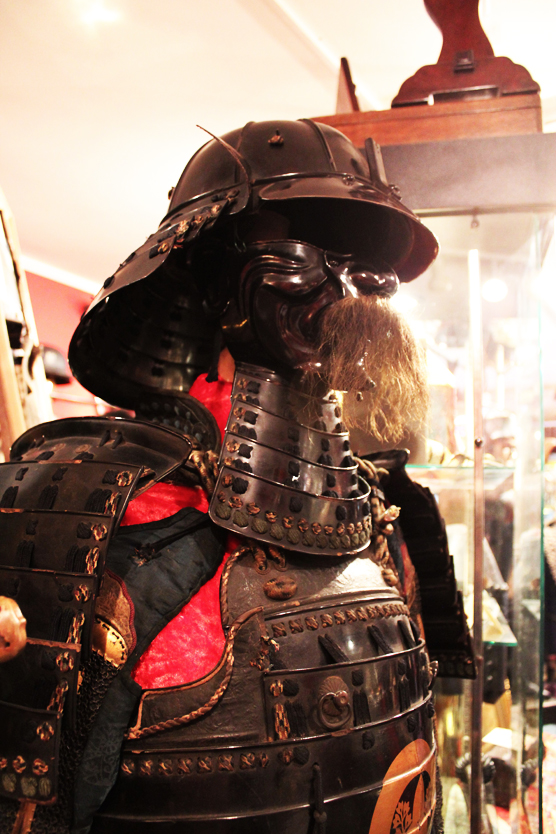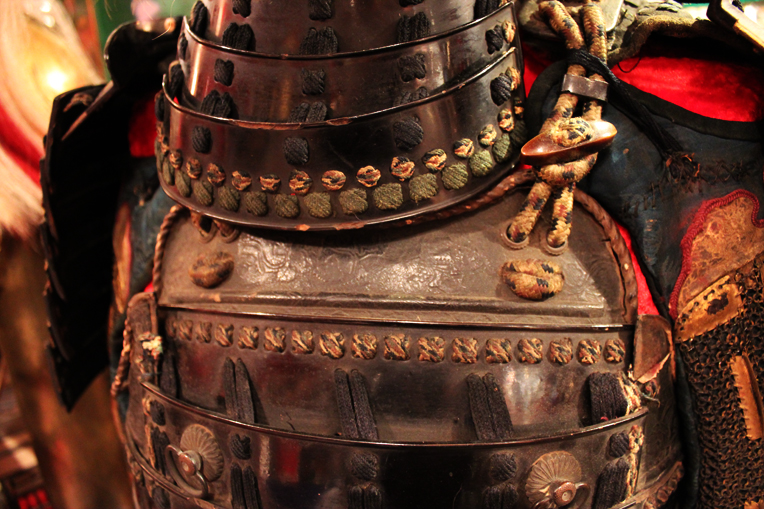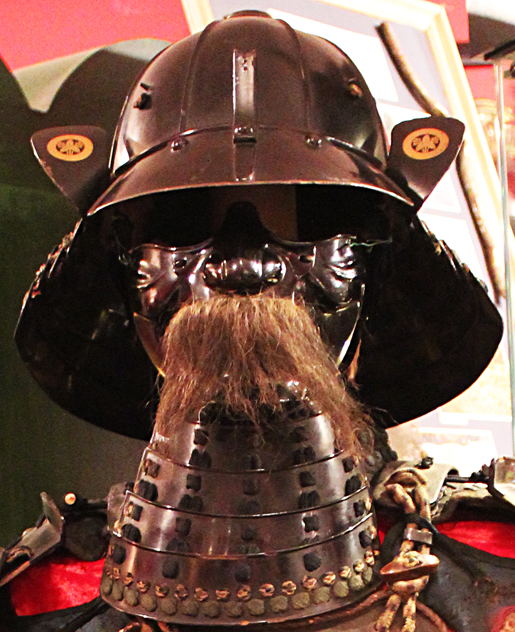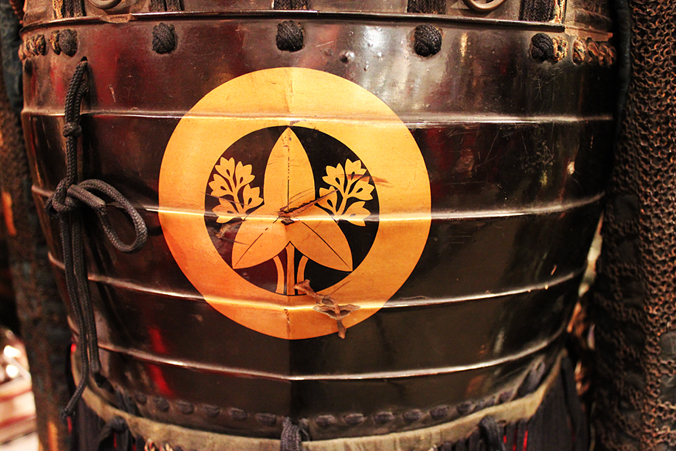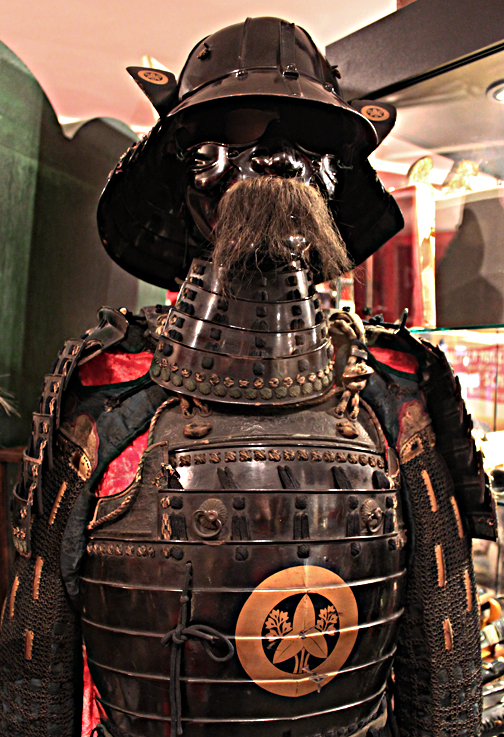A Fabulous Original Antique Edo Period Samurai Armour Of the Mizuno Clan, A Mizuno Clan Daimyo, Mizuno Nobumoto, Became A Shogun of Japan
Antique Edo period in very nice condition commensurate for age. Tachi omodaka mon of the Mizuno Clan. The rear of back plate has an intact sashimono holder clan flag pole. A samurai armour of a member of the Mizuno Clan, a Mizuno Daimyo family. The Mizuno are a branch of the Tokugawa family and Mizuno Nobumoto was Shogun, who died in 1576 just before the Edo period bagan in 1599. Mizuno Nobumoto was a daimyo of Japan's Sengoku period. A son of Mizuno Tadashige, and brother of Mizuno Tadamasa, he was the lord of Kariya Castle. It's kabuto helmet is a 8 plate goshozan suji bachi kabuto. Probably 17th-18th century. A ken plates Suji bachi, which is a multiple-plate type of Japanese helmet bowl with raised ridges or ribs showing where the 8 tate hagi-no-ita (helmet plates) come together at the four-stage tehen kanamono finial, with the fukurin metal edges on each of the standing plates. The mabisashi peak is lacquered and it has a four-tier lacquered iron hineno-jikoro neck-guard two Tachi Omadaka mon of the Mizuno on the front wings . With a full menpo face mask guard with moustach. The Do has the large gold Tachi Omadaka mon of the Mizuno and it bears at least twp sword cuts across it.
Nobumoto sided with Oda Nobuhide in 1542, having switched his allegiance from the Imagawa family, but soon changed sides once more, to serve under the Matsudaira family. He was assigned Kariya Castle to defend. Oda Nobunaga blamed Nobumoto of selling rice to Akiyama Nobutomo (a rival Takeda officer), in 1576. Tokugawa Ieyasu thus sent Hiraiwa Chikayoshi to kill him. Nobumoto's brother, Mizuno Tadashige then went on to take Nobutomo's place.
Nobumoto is buried in the Mizuno family temple, Ryogon-ji, a Zen Buddhist monastery established in 1413, in Kariya, Japan.
Mon and kamon are Japanese emblems used to decorate and identify an individual or family. While mon is encompassing term that may refer to any such device, kamon and mondokoro refer specifically to emblems used to identify a family.
The devices are similar to the badges and coats of arms in European heraldic tradition, which likewise are used to identify individuals and families. Mon are often referred to as crests in Western literature, which is another European heraldic device that mimics the mon in function. This armour has areas of worn and distressed lacquer and areas of cloth/material that are perished due to its great age as would be expected.
The armour, comprises of thigh tassets, cuirass fron and back hands arms and shoulder defences, and its helmet with menpo face armour is mounted on a mannequin stand,
Code: 19344




